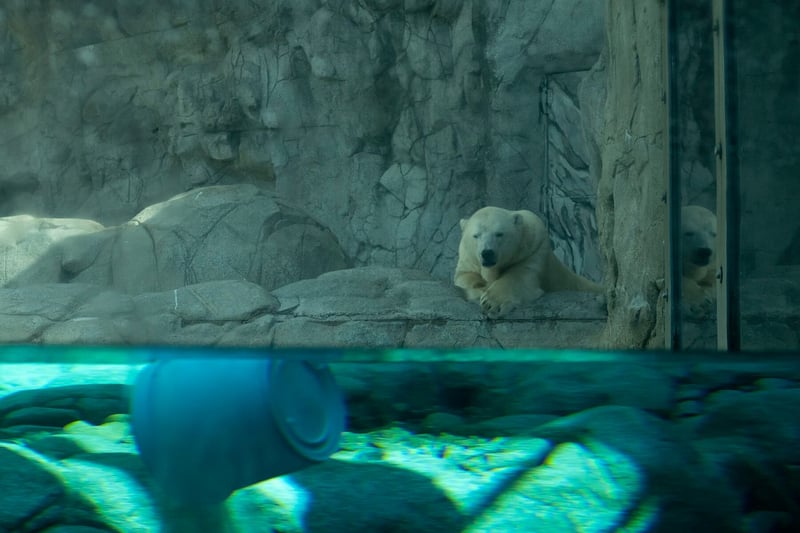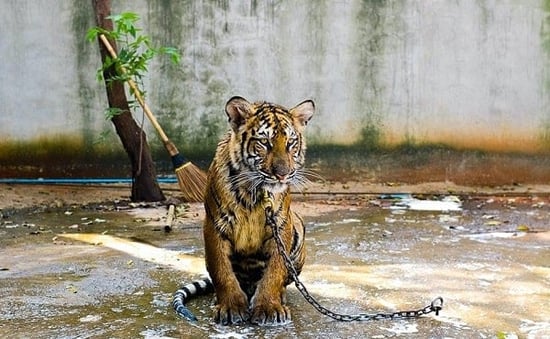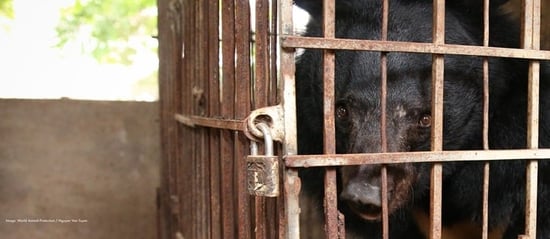
Eight polar bear facts that show why they don’t belong at Sea World
News
Did you know Sea World on the Gold Coast is Australia’s only captive polar bear venue? Here are eight polar bear facts that tell us why these bears should not be kept in captivity, much less in a sub-tropical city.
All images credit: Josh Wong
The best place to see polar bears is in the wild, where they belong. However, Sea World on the Gold Coast houses three captive polar bears - Nelson, Mishka, and Hudson - in their theme park.
Here are eight polar bear facts that explain why these magnificent animals should never be kept in captivity:
1. Polar bears can swim vast distances
Since they spend a large amount of their time in the ocean, polar bears are the only bears considered marine mammals. Their water-repellent fur insulates them from the cold air and water, and it is not unusual to find a polar bear more than 50 kilometres away from land. However, the polar bears at Sea World only have access to a pool that can barely be compared to the ocean they are used to in the wild.
2. Polar bears are the largest carnivores in the world
Polar bears are keen hunters and typically spend half of their time in the wild hunting for food – typically seals. However, this instinct is diminished at Sea World because they are fed a diet that includes dead sardines in oil, herring, veal, pork, chicken, trevally, olive oil and, strangely – watermelon.
3. Polar bears thrive in an environment of snow and ice
Polar bears have dense fur, a thick layer of fat to keep them warm and small bumps under their paws to stop them from slipping on ice – all of which show that they belong in their natural environment in the wild. But at Sea World, they are only occasionally provided with a patch of snow or ice. When a polar bear named Henry was relocated from Sea World to a facility with a more natural environment in Canada, he ‘faced a lot of changes in his new home but one thing he took an instant liking to, was snow!’
4. Polar bears are among the widest-ranging terrestrial mammals
In the wild, polar bears can have home ranges of a few hundred thousand square kilometres. But on the Gold Coast, the polar bear enclosure is smaller than the theme park's car park and less than 1% the size of their natural home range.
5. Polar bears have an extraordinary sense of smell
Polar bears have a highly evolved sense of smell. This means they can sniff out their prey from an entire kilometre away and even below a whole metre of snow. But at Sea World, they are exposed to many foreign smells as well as the scent of their natural prey, seals who are housed nearby.
6. Polar bears have hearing similar to that of humans
In the wild, polar bears live most of their lives in silence. But at Sea World, they are exposed to loud noises and vibrations of nearby rides, screams of visitors, loudspeakers, and occasional fireworks.
7. Polar bears are protective of their cubs
In the wild, mother polar bears are very protective of their cubs and often risk their own lives to defend them. Unfortunately, in captivity, over 50% of polar bear cubs die within the first month of their lives and it is no different at Sea World. Two out of four of the theme park’s polar bear cubs died in their first month of being born.
8. Polar bears are vulnerable to extinction
With only 22,000 polar bears left in the wild, these sentient beings are listed as vulnerable. However, breeding them in captive entertainment venues does not contribute to conservation in any way. Genuine efforts of conservation should work towards preserving and protecting polar bears in their natural habitat.
It is worth noting that not a single captive-bred polar bear has ever been successfully released into the wild, which leaves us with the question: Is Sea World breeding polar bears in captivity for the benefit of the species or their own?
With only 22,000 polar bears left in the wild, these sentient beings are listed as vulnerable. Breeding them in captive entertainment venues does not contribute to conservation in any way.
Animals, not entertainers
Across the globe, animals at wildlife tourism venues are forced to endure intense pain and mostly unseen suffering to entertain tourists and visitors on a daily basis.
Will you protect animals?
Every animal deserves a life worth living – from captive lions used for trophy hunting to mother pigs in cages in factory farms.




